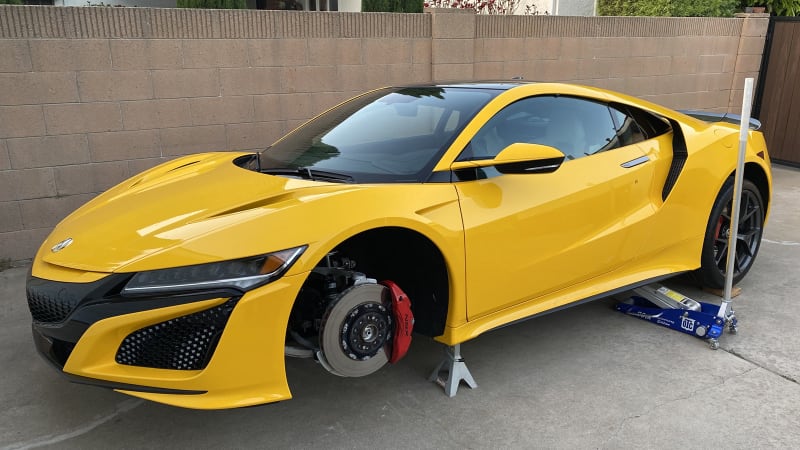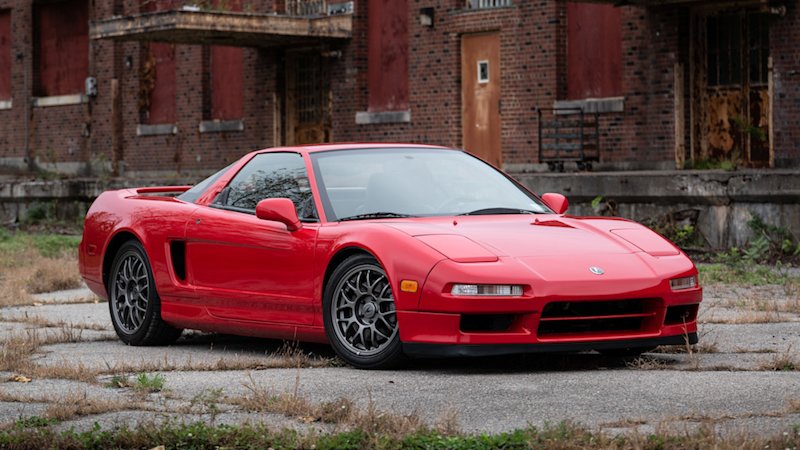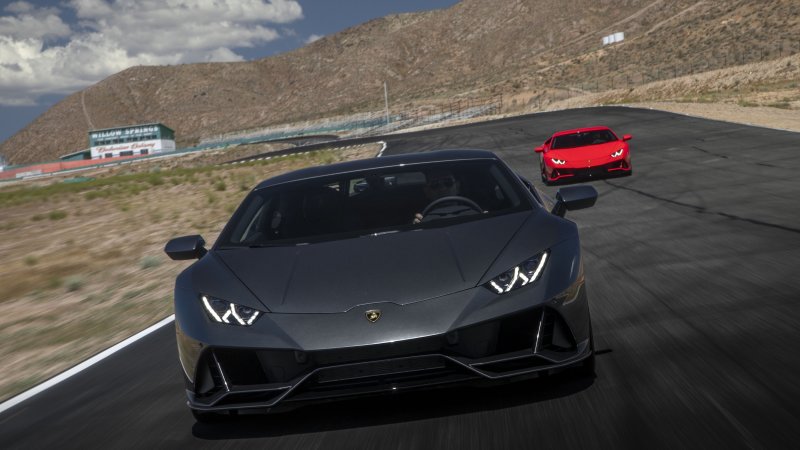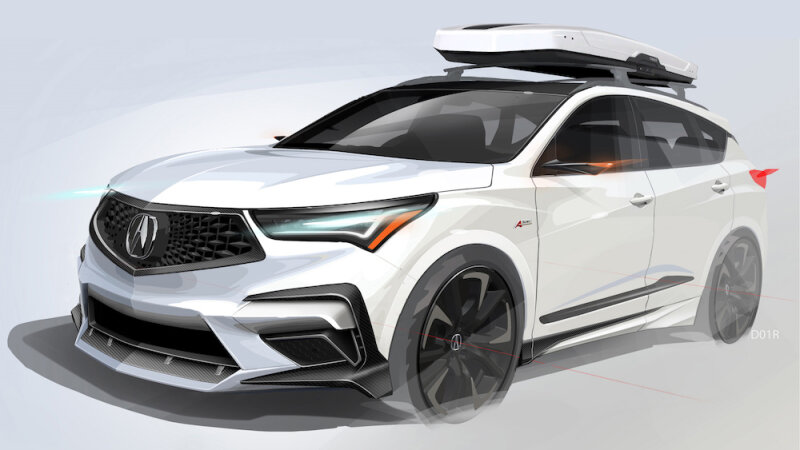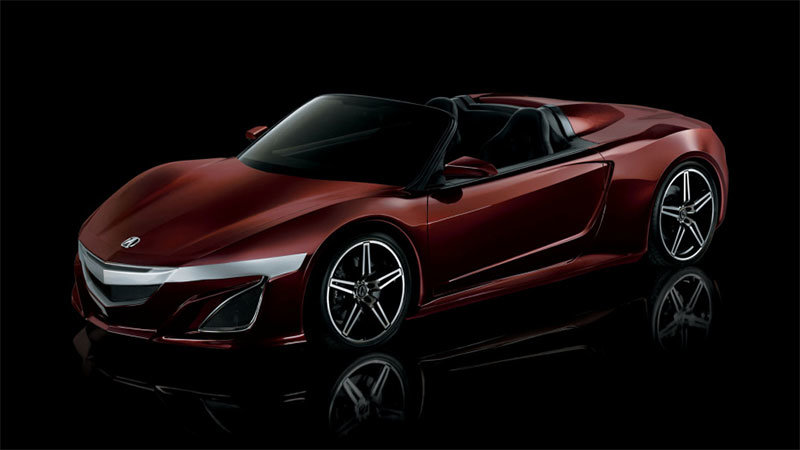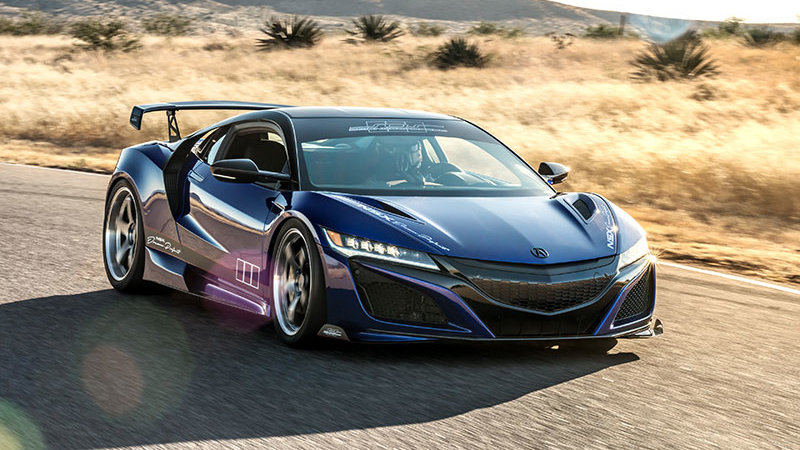The Acura NSX has been a special car as long as I’ve been in the business. The first one came out in 1990, the same year I started my career in automotive engineering. I vividly remember driving one briefly back then when we brought one in for benchmarking. I’d drive it again 22 years later when my previous employer bought a used 1991 example for a long-term test. Reader interest was sky-high and the car was still gorgeous, but the march of time and automotive engineering had clearly left it behind.
Then, in 2016, a second-generation NSX emerged, and it was packed with bleeding-edge thinking. It has a 3.5-liter twin-turbo V6, but this new NSX is a hybrid with an electric motor-generator sandwiched between the engine and its nine-speed DCT transmission. Two more electric motors – one for each wheel – power the front axle. There they can add traction, regenerate electricity under braking and dole out hyper-accurate levels of torque vectoring.
The car’s tire package was changed from Continental SportContact 5 to SportContact 6 tires in 2019, and numerous suspension re-tuning tweaks came along with them. The result is a lively and well-balanced car that is relentless when driven hard and a pussycat around town. Let’s see what they’ve got going on under there.
![]()
At first glance the 2020 Acura NSX appears to have dual wishbone front suspension. But we can’t tell for sure because that big two-piece brake rotor is in the way. The coil-over shock looks obvious, but a few odd details are apparent even from here.
![]()
This view also seems to indicate double wishbone suspension. But the pivot axis (green arrow) between the upper and lower ball joints looks wrong – it’s far too vertical. We’re missing something.
But I would be remiss if I failed to point out a few other things before we moved on. For one, the front drive axle confirms this to be an all-wheel-drive machine. Second, the forged aluminum damper mounting fork (yellow) that envelops the axle is mounted to the lower arm about 75% out from the arm’s inner pivot. The spring and damper motion ratio would be 0.75-to-1 relative to wheel movement, with a tiny reduction due to its lean angle.
Lastly, just look at the huge cast aluminum upright (white). Beautiful. Normally these are called hub carriers or steering knuckles, and I use the terms interchangeably. But the motorsports-derived term upright is normally applied when the piece is tall and, well, upright like this one.
![]()
This explains everything. The lower end of the upright is located by two forged aluminum links, each with its own outer ball joint. This type of suspension is often called Double Wishbone with Dual Lower Pivots even though we’re not technically looking at a wishbone.
That plastic piece is a fence that guides cooling air for the brakes. This will be your last look at it because I’m about to unbolt it.
![]()
The apparently too-vertical steering axis we saw earlier was a false first impression. The real lower pivot is a virtual point that lives in a physically impossible place where the lines of each link intersect. The angled forward link (yellow) locates the wheel in the fore-aft direction and absorbs longitudinal forces, while the rear lateral link (green) manages the camber angle and takes up cornering forces.
As you might expect, that virtual point moves about. Here’s what it looks like in action with the wheel off, and with the wheel on I can scrub the tire (and the driveway) to show where the pivot axis intersects the contact patch.
The point of all of this is to put the steering axis in a more favorable position relative to the tire’s contact patch in order to improve steering feel and lessen kickback and torque steer from the electric motors.
![]()
The actual pivot points do not reside where the nuts appear at the bottom. They live within the rubber bellows and the aluminum link. The two link ends are stacked and angled because they want them to be closer together than they could be if both were arrayed side-by-side on the same horizontal plane.
![]()
The arms and links of the front suspension are bolted to the chassis with what I call tie-bars, but I like the term dogbone used internally by Acura. The rear lateral link’s dogbone is spaced from the chassis by color-coded shims of varying thickness to achieve the desired camber angle.
![]()
The forged aluminum upper arm uses a low-mounted “in wheel” ball joint (yellow) similar to what we saw on the MX-5 Miata. That choice was made here for many of the same reasons: keep the hoodline and center of gravity low.
It’s mounted with a pair of dogbones, but the oddest bit may be that it serves as the attachment point for the front stabilizer bar’s end link (green). It’s mounted about 60% of the way out from the pivot for an approximate 0.6-to-1 motion ratio.
![]()
That non-standard link position does make it easy to locate the stabilizer bar itself in a quiet corner.
![]()
The NSX uses magnetorheological dampers (MR, but Mr. Dampers makes me smile) that are controlled by a system of suspension height sensors (yellow) at each corner, a steering angle sensor and g sensors. Probably others. The MR damper itself is made by BWI – the current patent holder – but Acura has developed its own control software and sensor suite.
MR dampers are continuously variable. The valving is fixed, but the viscosity of the damper fluid that passes through that valving can be varied proportionally by the application of an electrically-generated magnetic field. This gives them exceptionally quick reaction times.
Meanwhile, the upper mount pokes up to where we can see daylight and the yellow-painted underside of the hood.
![]()
The upper mount is laterally bolted to the chassis so the hoodline can be as low as possible. But it’s not a simple single-shear mount. Hidden stepped dowel extensions make it so the bolts aren’t doing everything on their own.
![]()
The brake master cylinder is mounted sideways and is operated by a stepper motor (yellow). This is common on hybrids and electric vehicles because they seek to prioritize magnetic “regenerative” braking for routine stops before using the pads and rotors. The brake pedal is attached to a smaller hydraulic cylinder to generate authentic feel and a pressure signal the system can use along with pedal position sensor data to calculate its response.
If this sounds like brake by wire, it absolutely is. And the feel is fantastic. Acura engineers told me the feeling can be so consistent that they had to program in an artificial “long pedal” to let an aggressive track-day driver know when the brakes were getting hot and losing effectiveness. If the by-wire system utterly fails – an exceedingly unlikely event – that smaller hydraulic cylinder attached to the pedal becomes the back-up system.
![]()
The brakes are made up of six-piston Brembo fixed calipers and two-piece rotors. Steel rotors are standard, but long-lasting lightweight ceramic ones that save 52 pounds of total unsprung mass are available as an option.
The calipers use an open-window design, but they have a bridge bolt stiffener (yellow) that must be removed before the pads can be extracted.
![]()
The initial view of the rear looks similar to what we first saw up front, except there are two calipers back here.
![]()
There’s another forged aluminum upper arm back here, and it’s mounted with dogbones that are deep-set into a vast ablation-cast aluminum section of the rear chassis.
![]()
The lower end of the rear damper (yellow) is mounted directly to the knuckle, which gives it a 1-to-1 motion ratio. This is a high mounting point above the rear axle, and the mounting bolt itself also anchors a bracket for the stabilizer bar end link (green), which means it has a 1-to-1 motion ratio, too.
Meanwhile, the rear position sensor’s strut (white) and its upper arm attachment are clearly visible.
![]()
The rear damper’s somewhat high lower mounting doesn’t indicate a short damper. Like most mid-engine cars, the rear of the NSX has high haunches. And the upper attachment is the same low-profile sideways-bolted mount we saw in the front.
![]()
![]()
The lower end of the rear knuckle is located by a pair of links, making this a multilink suspension that just happens to have one wishbone. Each carries a plastic brake cooling air deflector that must be removed so we can see better, but an unusual-looking nozzle (yellow) remains.
![]()
That noozle is the terminus of a tube that is enclosed within the forward half of the two-piece rear subframe, and the source of its air is a NACA duct located closer to the middle of the car.
![]()
The forward link is an angled semi-trailing link that is mainly concerned with the wheel’s fore-aft location. Its high mounting relative to its partner link is a sign of anti-squat rear geometry.
![]()
![]()
The lateral link’s dogbone attaches to the chassis in an angled orientation that makes its pivot axis (yellow) roughly line up with the forward link’s elevated pivot point.
As we saw up front, the rear wheel’s camber is adjusted via color-coded shims that are sandwiched between the dogbone and the chassis. This view also shows the overlapping interface of the two-piece subframe (green) at a point where both parts share a mounting bolt.
![]()
The toe link sits behind the rest, and it is quite a bit longer than its partners. Mid-engine cars are very responsive to steering inputs, so a healthy dose of roll understeer is necessary to keep them in line. This one has a turnbuckle (yellow) in the middle for easy static toe adjustments.
![]()
Here’s how this trio of links bolts to what is a tidy cast-aluminum knuckle.
![]()
No I didn’t forget about the rear stabilizer bar. Its pivots (yellow) are sandwiched between the rear subframe half and the chassis, and it arcs over the lateral link to meet its own connecting link (green). Try to ignore the bracket, which holds the air deflector I removed.
![]()
The main brake is a Brembo four-piston fixed caliper with an open pad-extraction window, while the smaller one is an electronically-controlled parking brake. The extremely flat central hat section of the two-piece brake rotor leaves no room for the in-hat drum parking brakes that less performance-minded cars tend to favor.
![]()
For their size, the Acura NSX’s wheel and tire package are admirably light. The 2019 and 2020 versions of the NSX use Continental SportContact 6 tires mounted on Y-spoke rims, a design that was chosen for its superior strength-to-weight ratio. It doesn’t hurt that they look fantastic, too. The 19-inch front rims are 8.5 inches wide, wear 245/35ZR19 tires and the assembly weighs just 41.5 pounds. The 20-inch rears are 11 inches wide, are shod with 305/30ZR20 tires and weigh just 54.5 pounds each.
There’s a lot of fascinating engineering hidden within the wheelhouses of the second-generation Acura NSX. And it all works beautifully. The 2020 NSX is an epic-handling machine that is also quite livable day-in day-out on the street. It is a thoroughly modern supercar, but it also plays homage to the original. It’s a pity we don’t see more of them out there on the road.
Contributing writer Dan Edmunds is a veteran automotive engineer and journalist. He worked as a vehicle development engineer for Toyota and Hyundai with an emphasis on chassis tuning, and was the director of vehicle testing at Edmunds.com (no relation) for 14 years.
Read more Suspension Deep Dives below and let us know which cars you’d like to see Dan put up onto the jack stand next …
Mazda MX-5 Miata Suspension Deep Dive
Toyota GR Supra Suspension Deep Dive
Porsche Taycan Turbo Suspension Deep Dive
Related Video:

